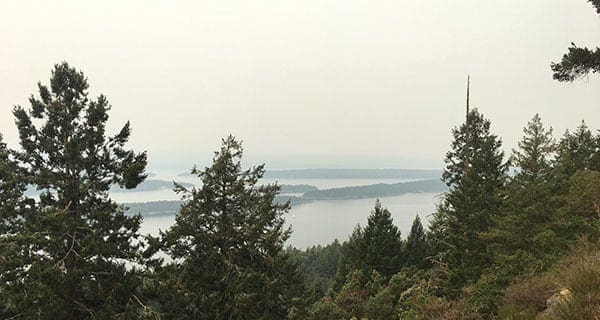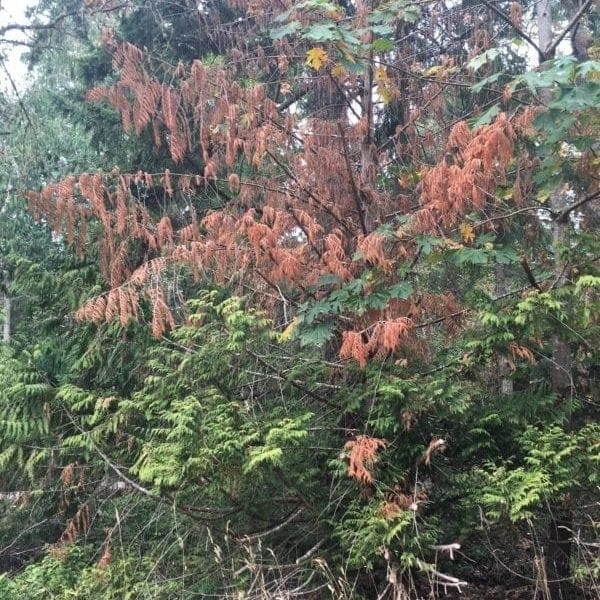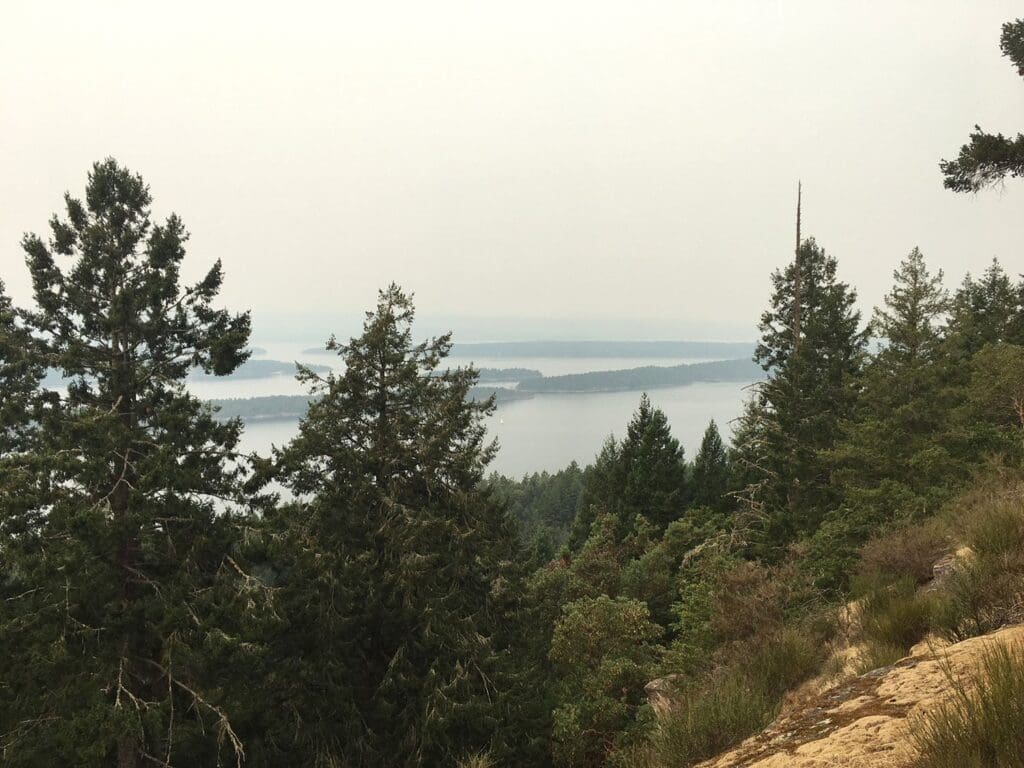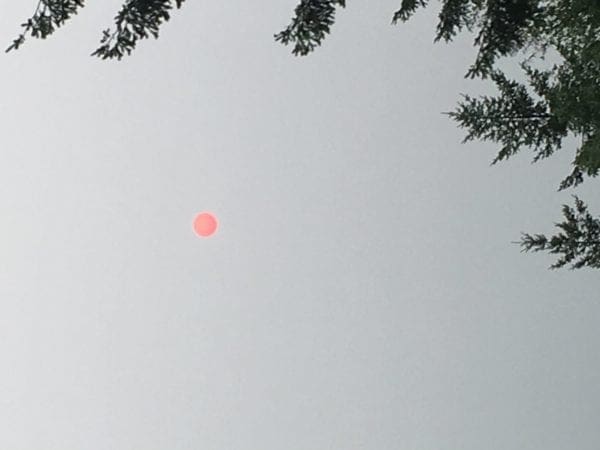 The last five summers at Skelhp, on B.C.’s Sunshine Coast, have been progressively drier.
The last five summers at Skelhp, on B.C.’s Sunshine Coast, have been progressively drier.
We’ve had one significant wildfire nearby, in Sechelt Inlet, which wafted ash in a big brown plume over our regional air shed. The smoke from this fire three years ago caused us to close all the windows in the July heat and tough it out for a few nights in close quarters. It wasn’t fun.
And it started what has become for me a persistent low-grade anxiety about haze and smoke, and why it’s here.
This August’s repeat experience at Skelhp, and really the entirety of the province, is not just more of the same – it’s much worse. Starting in the first week of the month, with nearly 600 wildfires burning in B.C., the deep coastal inlets have become funnels for interior fire smoke whenever the winds blow from the east or northeast. Even the prevailing summer westerlies have brought smoke this year, from scores of lightning strike ignitions on northern Vancouver Island.
So we’re back to the familiar routines of closing windows, limiting outdoor exertions of any kind, and even second guessing early-morning fishing trips out to the old familiar grounds off Sandbanks and Coho Point.
The last time we went down to the marina to check the boat, there was a light fall of ash all over the hull. It’s hard not to look at the boat and wonder what your lung tissue is starting to look like.
We spent last weekend with relatives who live on Galiano Island. When we arrived, it was pretty clear but their magnificent northeast view slowly started to clog up with haze as Saturday’s sun began to rise. Soon enough, it burned an eerie apocalyptic red ring through the browning atmosphere.
On an afternoon hike to the 300-metre-high Bodega Ridge trail, we saw that Saltspring and southern Vancouver Island were also hazing up – this time with Washington State wood smoke.
One had the sense of doom closing in from all compass points.
Checking online news on Saturday night, I read that the eastern slopes of the Rockies, and Calgary and Edmonton in particular, had also become smoke traps for the B.C. fires. Calgary had a 10-plus air quality rating – the worst possible on the scale. It beat Beijing and Mumbai for worst air quality in an urban centre.
Whistler, Vancouver and the Fraser Valley were soon to follow.
I called an old Calgary friend, now retired in Canmore, to gather his opinions on the smoke and compare notes. His first comment was right on target: “I just hope that people are connecting the dots.” He couldn’t have been more on point.
He and I are lifelong outdoors enthusiasts and have had the opportunity through work to really get to know Canada from coast to coast to coast. This kind of background is a privilege, as it gives you a greater awareness of the national landscape. I’ve met very few people who share it. They tend to be federal politicians and very senior public servants, senior ranks in the military, national airline flight crews, a few academics and, from the 1970s to the early 2000s, members of the Alberta oil patch.
When you’ve travelled this widely, you begin to think of your country as the sum of all the parts you’ve visited, and to think of the national landscape as a living, holistic organism. In this way, you truly connect the dots when you think about Canada.
When I connect the climate dots now, I think holistically. The evidence is everywhere:
- Right across Canada, many of the highest ever recorded temperatures are being notched this summer.
- Juvenile red cedars are turning brown and dying in the coastal areas that ring the Salish sea.
- The rain we missed down south in July and August has fallen in buckets in the Gwich’in territories in the western Arctic.
- Toronto has had a bizarre sequence of summer rain floods.
- Eighty-three seniors died in the southern Quebec heat wave during Canada Day week.
- St. John’s, N.L., has experienced an atypical, lingering hot spell.
- On the McRae Islets sea lion haul-out, close to where I fish, dark brown southern California sea lions are lying for the first time next to blonde northern Steller sea lions.
Where there’s smoke, there’s fire. The pace of climate change is much faster than we thought.
Troy Media columnist Mike Robinson has been CEO of three Canadian NGOs: the Arctic Institute of North America, the Glenbow Museum and the Bill Reid Gallery.
The views, opinions and positions expressed by columnists and contributors are the author’s alone. They do not inherently or expressly reflect the views, opinions and/or positions of our publication.





